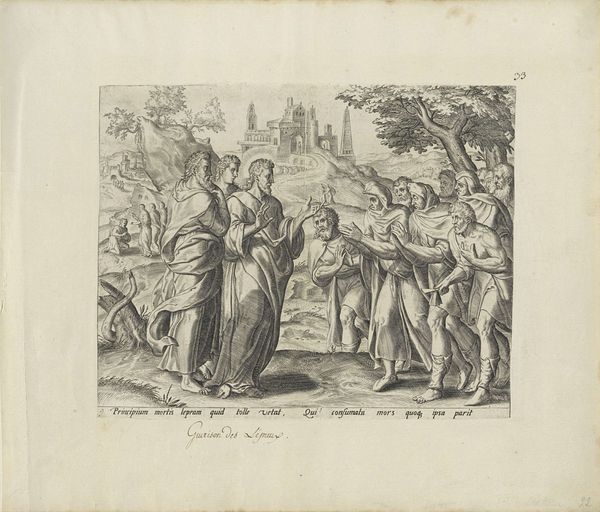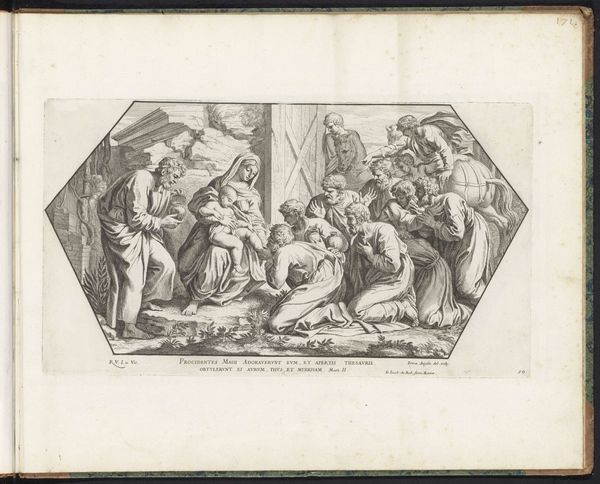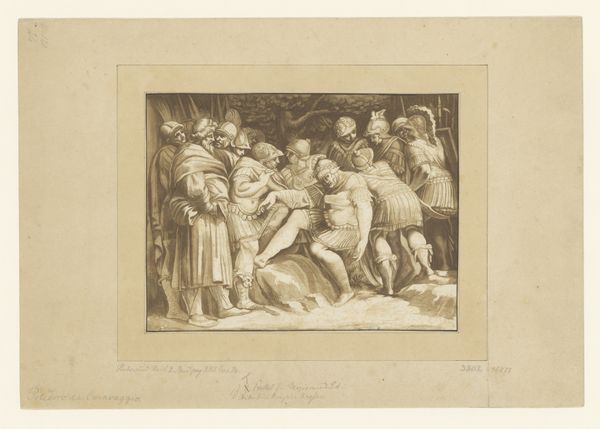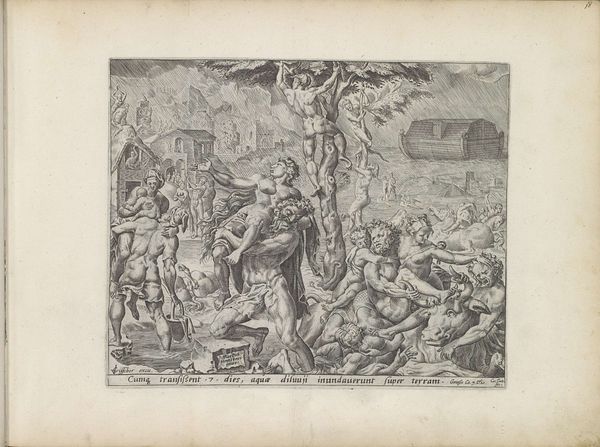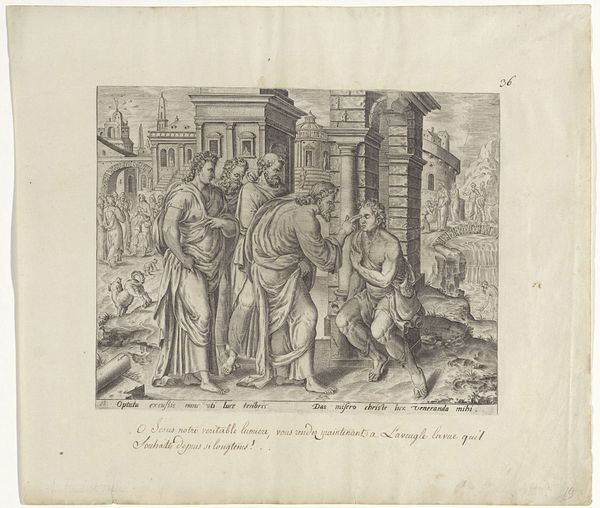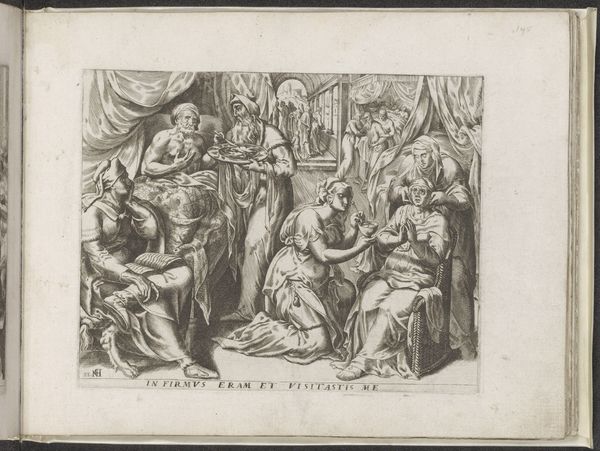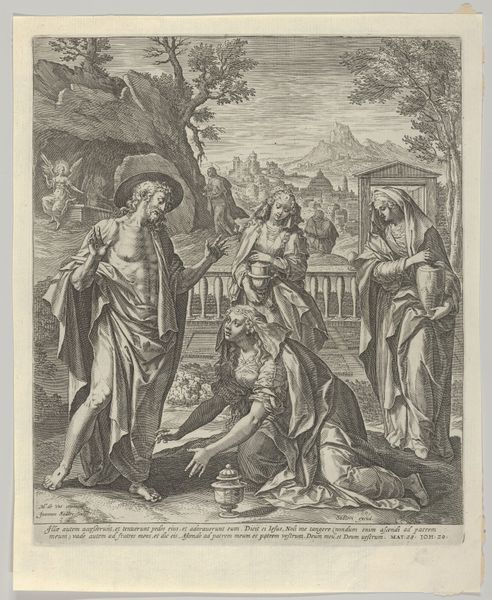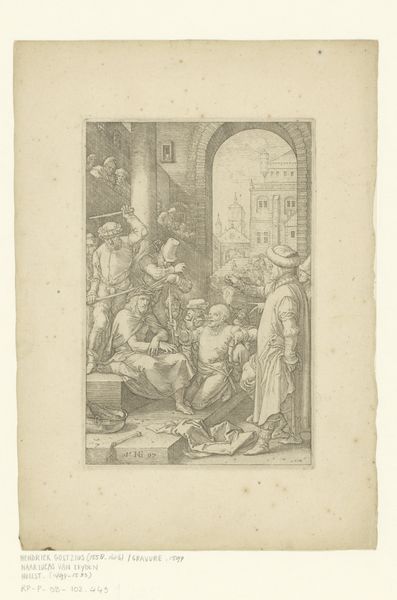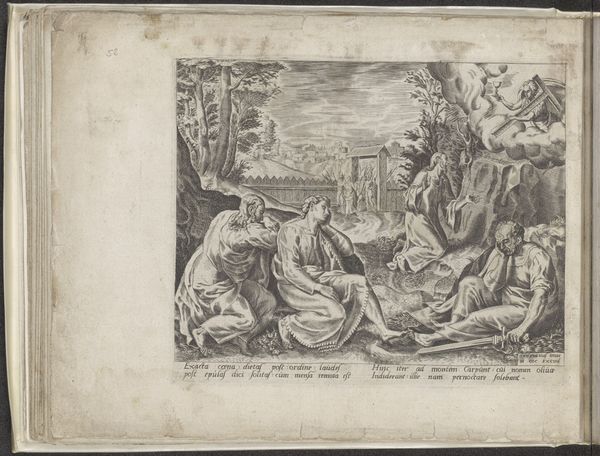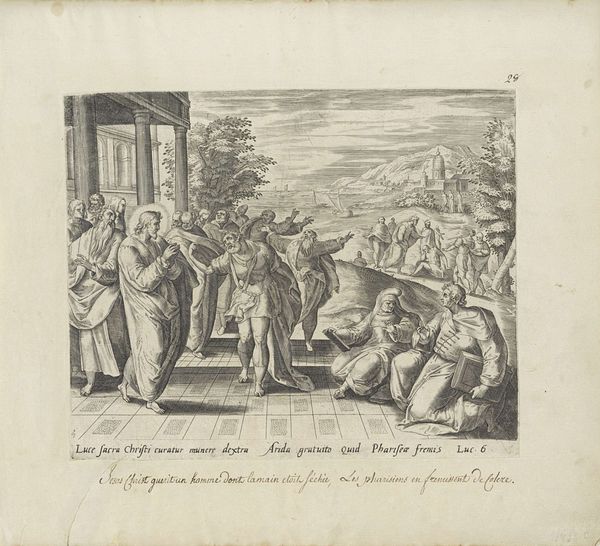
print, engraving
#
narrative-art
# print
#
figuration
#
11_renaissance
#
history-painting
#
engraving
Dimensions: height 204 mm, width 255 mm
Copyright: Rijks Museum: Open Domain
Editor: Here we have "The Raising of Lazarus," an engraving dating from around 1579-1585 by Wierix, currently held at the Rijksmuseum. What strikes me is the incredibly detailed architecture in the background contrasted with the raw emotion of the figures in the foreground. How do you interpret the use of such distinct visual elements in the same piece? Curator: It's fascinating, isn't it? Looking at this engraving through a historical lens, we must consider the role prints played in disseminating religious narratives during the Renaissance. Wierix situates this miraculous event – Lazarus rising from the dead – not in a vague, faraway land, but within a very specific architectural context that evokes classical Rome. What effect do you think this has on the viewer? Editor: It almost… legitimizes the story, makes it more real by associating it with a tangible, respected historical power like Rome. It's like grounding the miraculous in reality. Curator: Precisely! And consider the intended audience. These prints were often commissioned by or circulated amongst wealthy patrons and religious orders. Associating the event with classical Rome lends it a certain prestige and authority. Moreover, the level of detail would have demonstrated the skill of the engraver and, by extension, the value of the print itself as an object of art and devotion. It's about visualizing power through image. Editor: That makes sense. So the combination of biblical narrative, realistic depiction, and classical architecture becomes a political statement as much as a religious one? Curator: Yes, I would say so. This artwork blurs the boundaries of devotion and the socio-political context of that time. What were your initial impressions, after hearing that analysis? Editor: Well, I initially focused on the artistic skill and the stark contrast. But now, I see it as a complex interplay of faith, power, and the persuasive potential of images. Curator: Indeed! It shows us how art from any era never exists in a vacuum but is intrinsically tied to the cultural forces that shape its creation and reception.
Comments
No comments
Be the first to comment and join the conversation on the ultimate creative platform.
